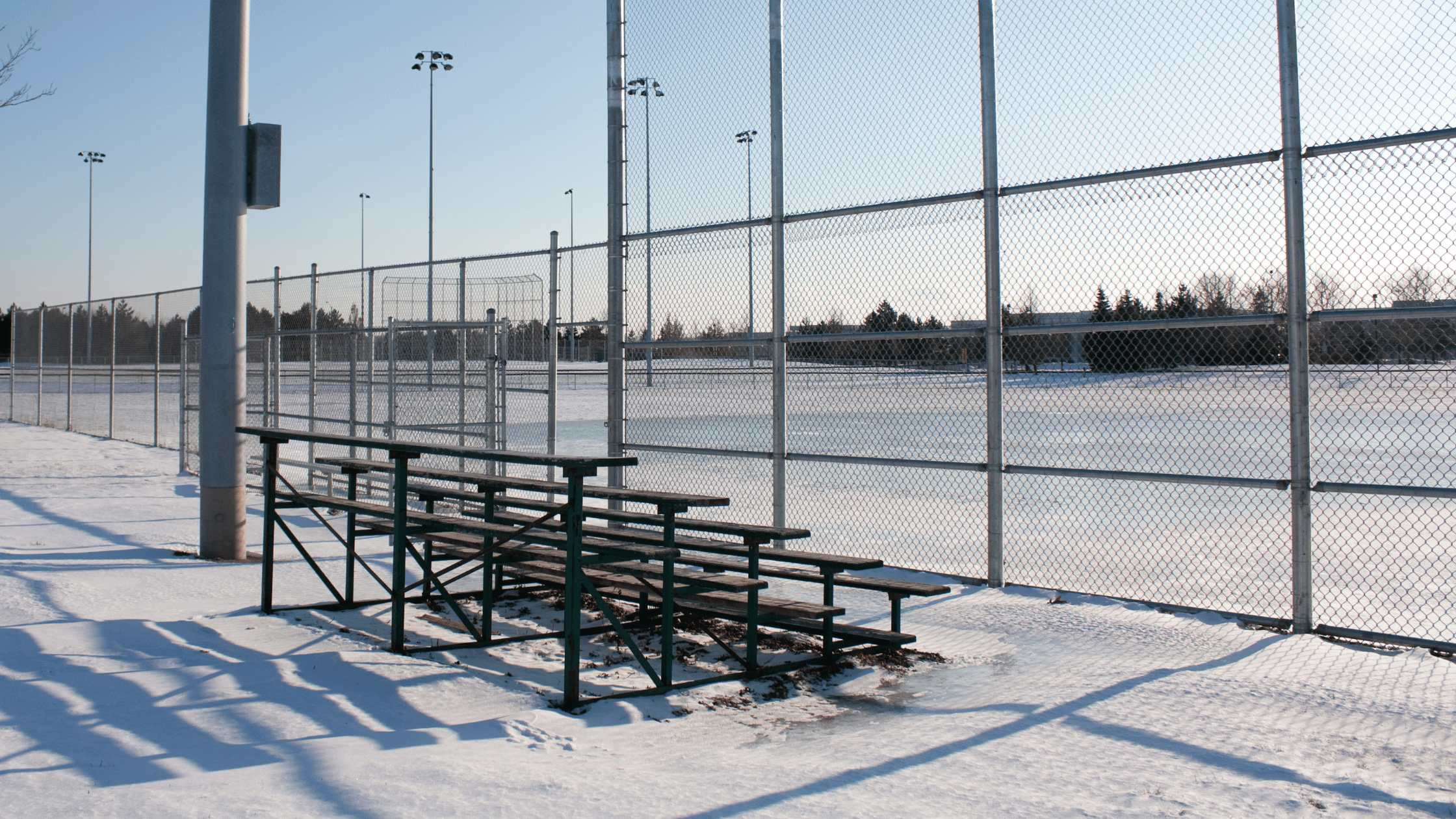Don’t Let the Weather Become Your Disadvantage: Pitch Training in Colder Climates
While it may be cold outside, our athletes at Premier Pitching Performance (PPP) are heating up for the performance season. To help you train more effectively in colder temps, PPP Coach Jason Immekus is breaking down the keys to cold weather training for pitchers.
Indoor Ingenuity: Making Every Throw Count
While winter may force your training indoors, it doesn’t have to just be about chucking balls into a net and calling it a day. The fact is, players in the southern states are able to train outside regularly. So if you’re in a colder climate, you don’t want to get left behind.
That’s why it’s important to become more intentional with your training in colder months and think of your indoor workouts as an opportunity to get creative.
For example, when playing long toss into a net, try to simulate the distances you would be throwing to on the field. By strategizing distances, visualizing targets and perfecting your mechanics, every throw becomes a calculated step. This way you can maximize your training while indoors, so when you can get back out into the field you can seamlessly transition and expedite your growth as a pitcher.
Adapting to the Freeze: Winterize Your Training
Between icy road conditions and winter illnesses, it’s easy to get thrown off your training schedule. But you don’t have to let cold weather throw a curveball to your training. Here are a few tips for cold weather training:
-
Train at Home
Snowed in? Don’t let this deter you from your throwing schedule. Staying on schedule is key during an on ramp or bullpen schedule as we approach baseball season. You can also make adjustments to your lifting routine to be able to execute your lifting days at home by substituting body weight or Plyometric exercises even if you don’t have access to the gym.
-
Plan Ahead
“If you don’t have an indoor training facility, you can focus on good days to practice. Get out on the 45 degree days,” Coach Immekus recommends.
By planning your training according to the weather, you can take advantage of opportunities to get in your throw count and continue taking small steps to move forward in your throwing program.
And if weather takes a turn for the worst, it’s also important to have a back up training plan in place. This way you can get your throws in even when you can’t get out of the house.
-
Layer Up
When you are training or performing outdoors in cold temps, remember to dress in moisture-wicking base layers, breathable mid-layers and a windproof outer shell to stay warm and dry. Use hats and gloves to stay warm between throws.
Coach Immekus reminds his players to test out their base layers ahead of time to make sure they aren’t restricting movement. Comfort and flexibility is key!
-
Get Resourceful with Your Equipment
If you don’t have access to equipment like plyo balls at home, adapt your training by turning everyday items into pitching tools. You can grab a long sock and a baseball. Fitting the ball in the bottom of a sock creates a DIY throwing sleeve. Finding creative ways to get your throwing in are small ways to create separation between you and your competition. Your future self will thank you for these unorthodox throws.
Conquering Cold Weather Training Challenges
While winter can be challenging, pitchers can use colder temps to their favor, Immekus says.
“In a cold weather environment, pitchers are usually the warmest ones on the field. It’s all about getting yourself in a spot physically and mentally where you can concentrate on your game.”
Here are few more tips you use to overcome colder conditions:
-
Fight Winter Illnesses
Stay healthy! This time of year illnesses are common. If you end up getting sick and missing a few days of training, don't jump back in headfirst.
“Ease your body back into training,” Immekus recommends. “Don’t just pick back up on your regular training schedule. Give your body time to recover.”
-
Warm-up Properly
Pay attention to the temperature. Layer up wisely and take your time warming up. Coach Immekus recommends 30-45 minutes to get your body temp up properly, starting indoors and finishing outside. This also means that you’ll have to plan ahead with your training schedule so that you can fit in a decent warm up.
-
Recovery Rituals
After a colder temp game or training session, prioritize recovery by taking a warm shower and changing into dry clothes as soon as possible.
Gear Up for Winter Training With the Right Tools
The right equipment and tools can make all the difference. Coach Immekus recommends:
- Gloves: Keep your hands warm between throws.
- Plyo balls: prep your arm and use these as a tool when you don’t have room to throw or may not have a throwing partner.
- Net: Perfect your throws at home.
- Thermal layers: Stay warm without sacrificing movement.
- Hydration essentials: Water, water, water! Don't underestimate the importance of staying hydrated in the cold.
Heat Up Your Game With the Help of Premier Pitching Performance
Winter isn't a time to hibernate. It's a time to build and adapt. Follow these tips, train smart, and you'll be ready to dominate the details when the weather warms.
Get a personalized assessment and remote training program from our expert coaches at Premier Pitching Performance. We'll craft a performance plan tailor-made for you, so when March comes, you'll be ready to unleash your best game. Fill out the form here to get started and turn winter into your personal pitching advantage!

